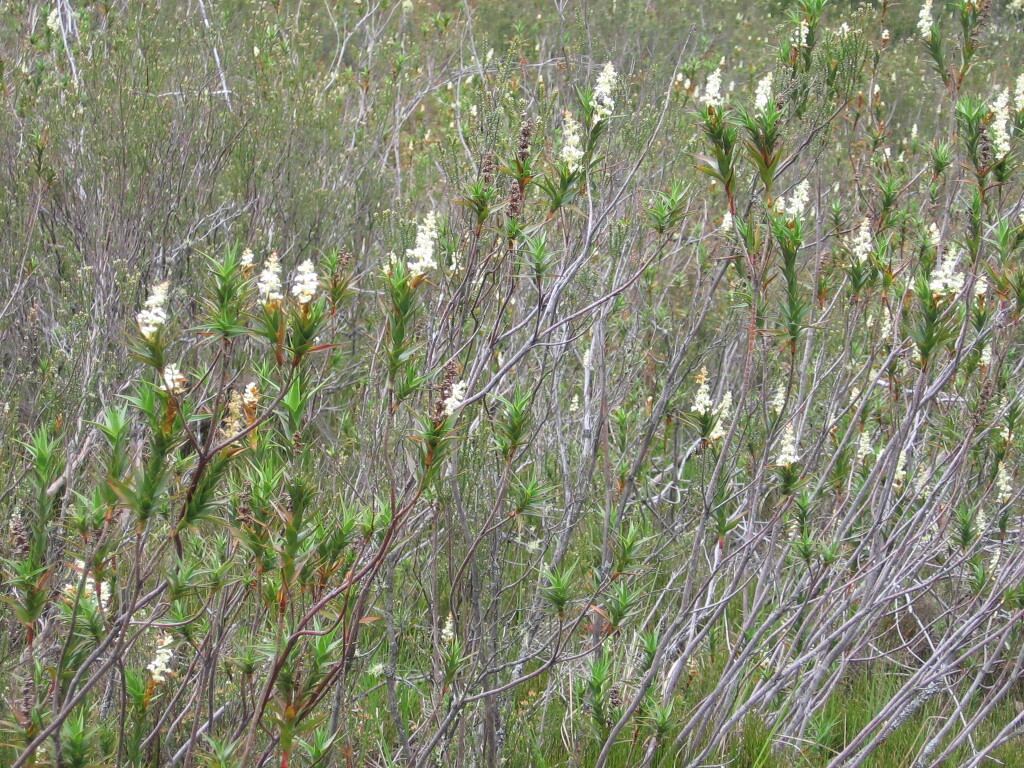Dracophyllum victorianum
(Menadue) S.VenterNarrowly erect shrub 0.7–2 m high; older branches with prominent annular scars. Leaves usually persisting only on the upper 5–40 cm of stem, spreading, sometimes slightly twisted, ovate-lanceolate to triangular, 3–10 cm long, 5–11 mm wide, flat to concave; apex straight or decurved, shortly pungent-pointed; margins serrulate. Flowers in dense narrow spike-like panicles to c. 12 cm long; peduncle not or only slightly exserted from leaf-sheaths; inflorescence axis glabrous; lateral branches to 18 mm long; sepals 4 or 5, broadly ovate, 1.2–1.5 mm long, obtuse to subacute; corolla white, 3.5–4 mm long; anthers narrowly oblong; filaments 3–3.5 mm long; nectary rudimentary, style c. 1.5–1.7 mm long. Fruit c. 2 mm long; seeds 0.8–1.1 mm long. Flowers Nov.–Jan.
HSF, VAlp. Endemic to Victoria. Restricted to montane and subalpine sites on and near the Baw Baw Plateau and the Blue Range, between Marysville and Taggerty. Occurs in wet heathland, wet scrub or margins of cool-temperate rainforest.
Similar to D. gunnii Hook, f., which is restricted to similar montane and sub-alpine heaths in Tasmania. Dracophyllum victorianum differs from D. gunnii in having glabrous main inflorescence axes, longer inflorescence branches, slightly narrower operculum, longer anthers, filaments and capsules, a tendency for the leaves to be longer and not so markedly spirally arranged, and in its rudimentary nectary scales.
Albrecht, D.E. (1996). Epacridaceae. In: Walsh, N.G.; Entwisle, T.J., Flora of Victoria Vol. 3, Dicotyledons Winteraceae to Myrtaceae, pp. 464–509. Inkata Press, Melbourne.
 Spinning
Spinning